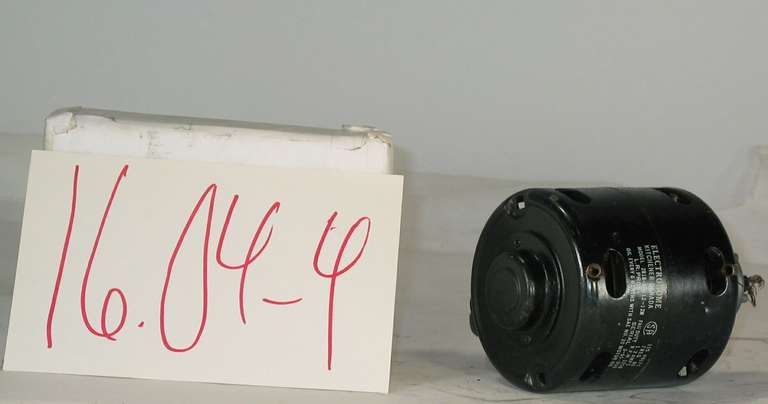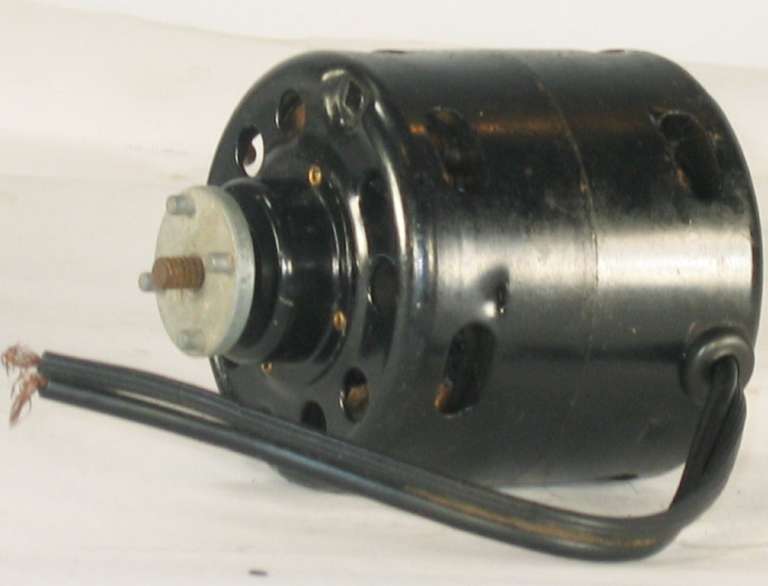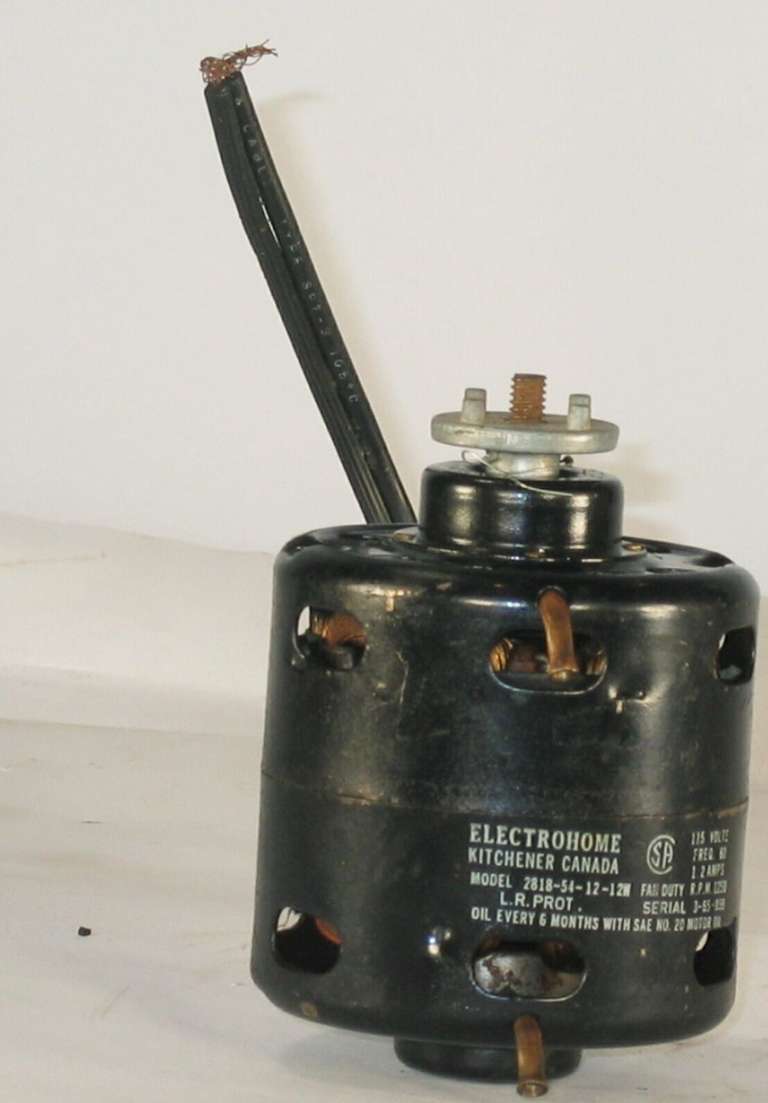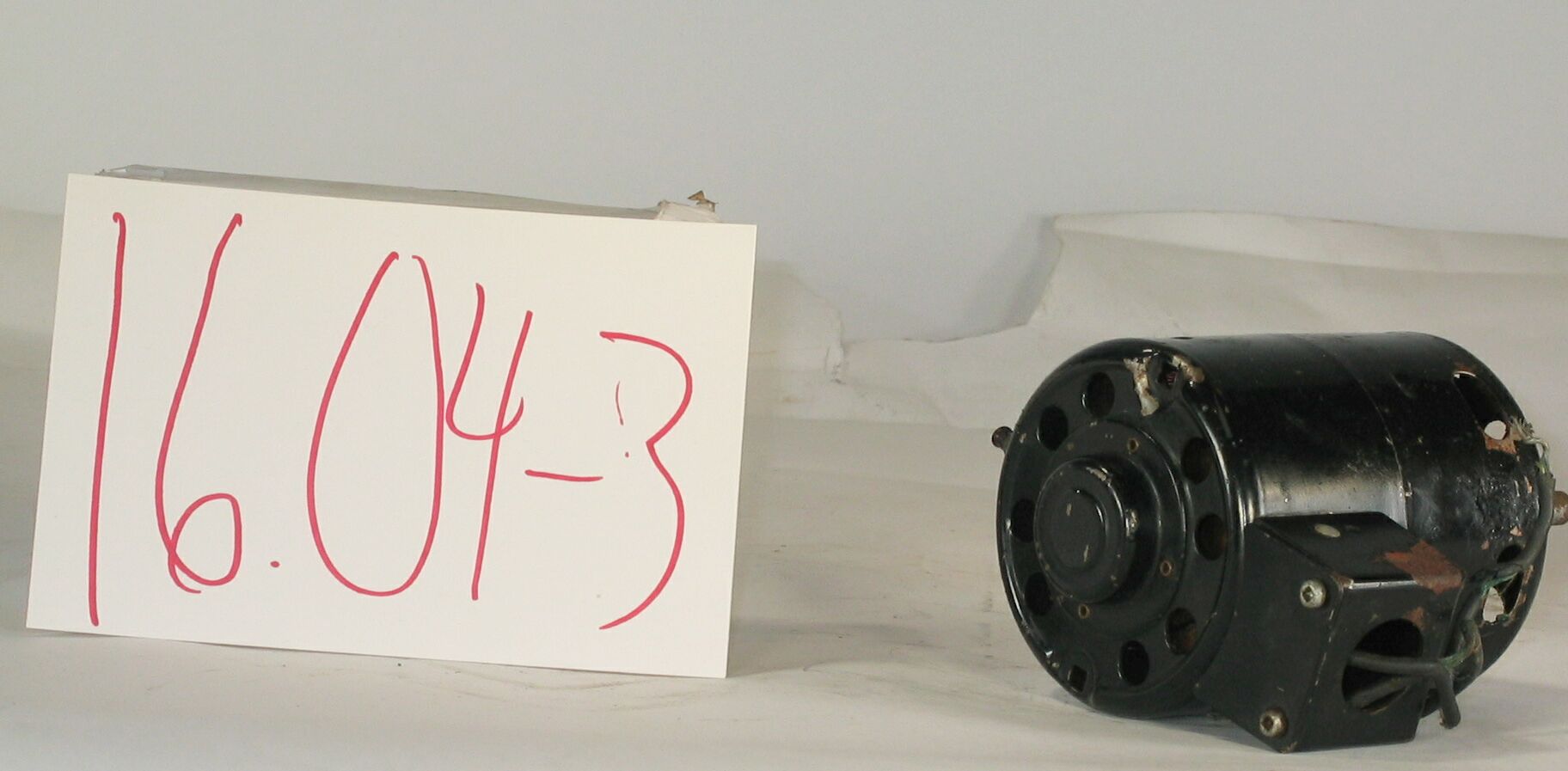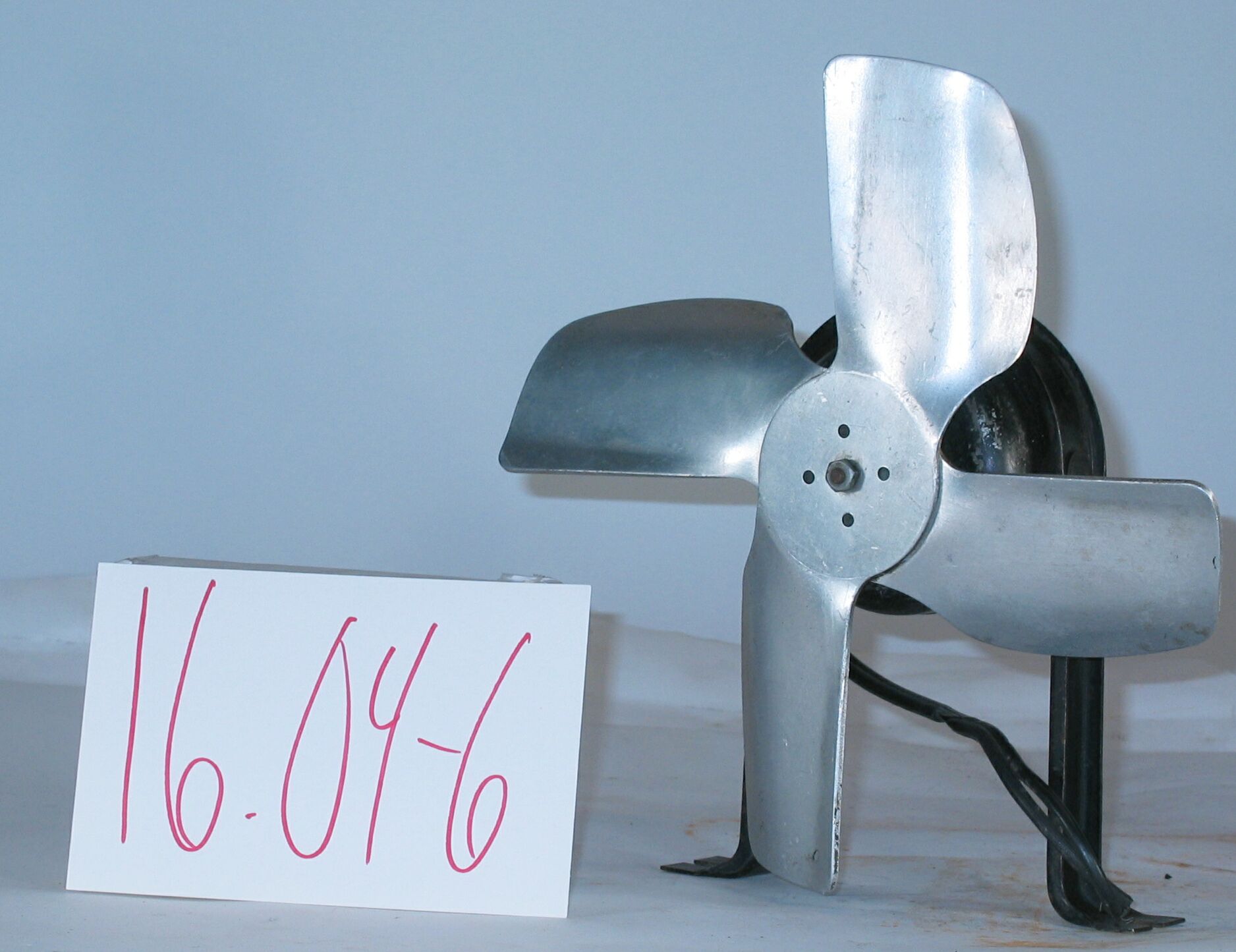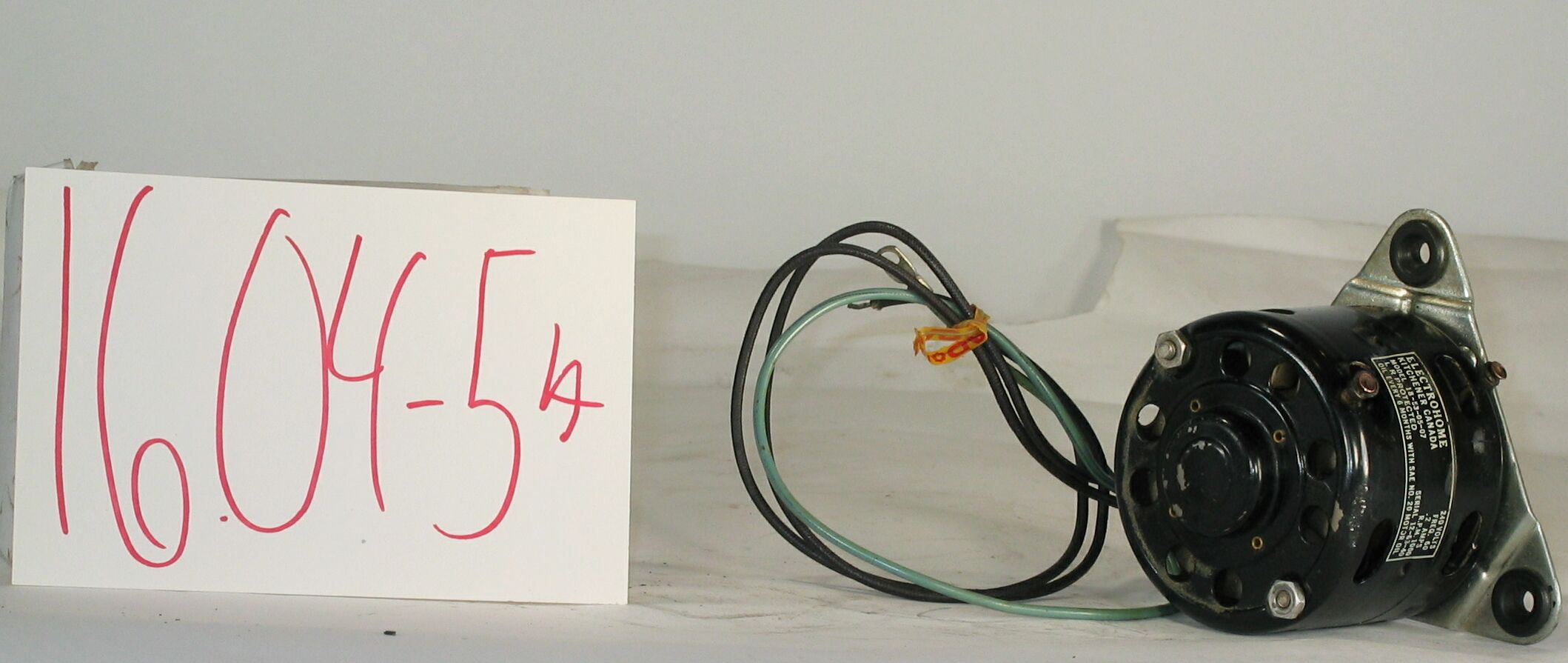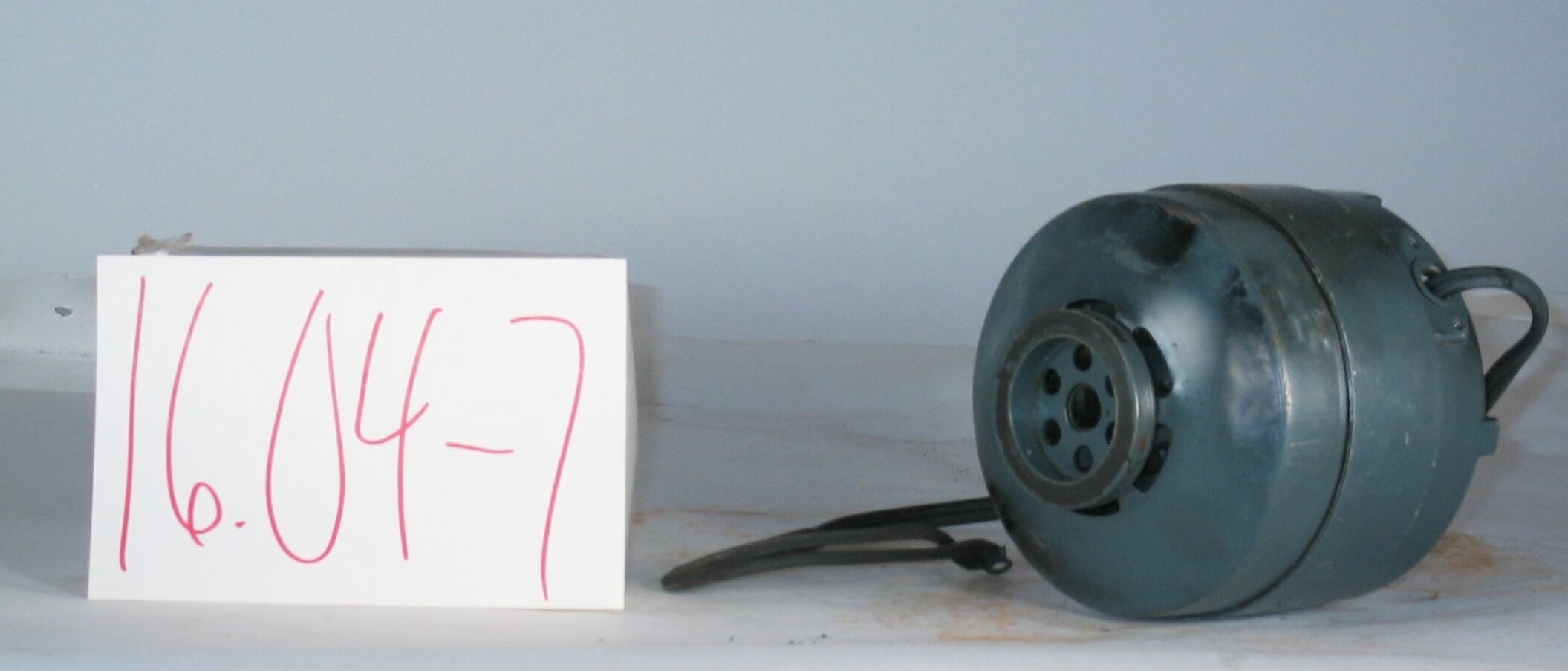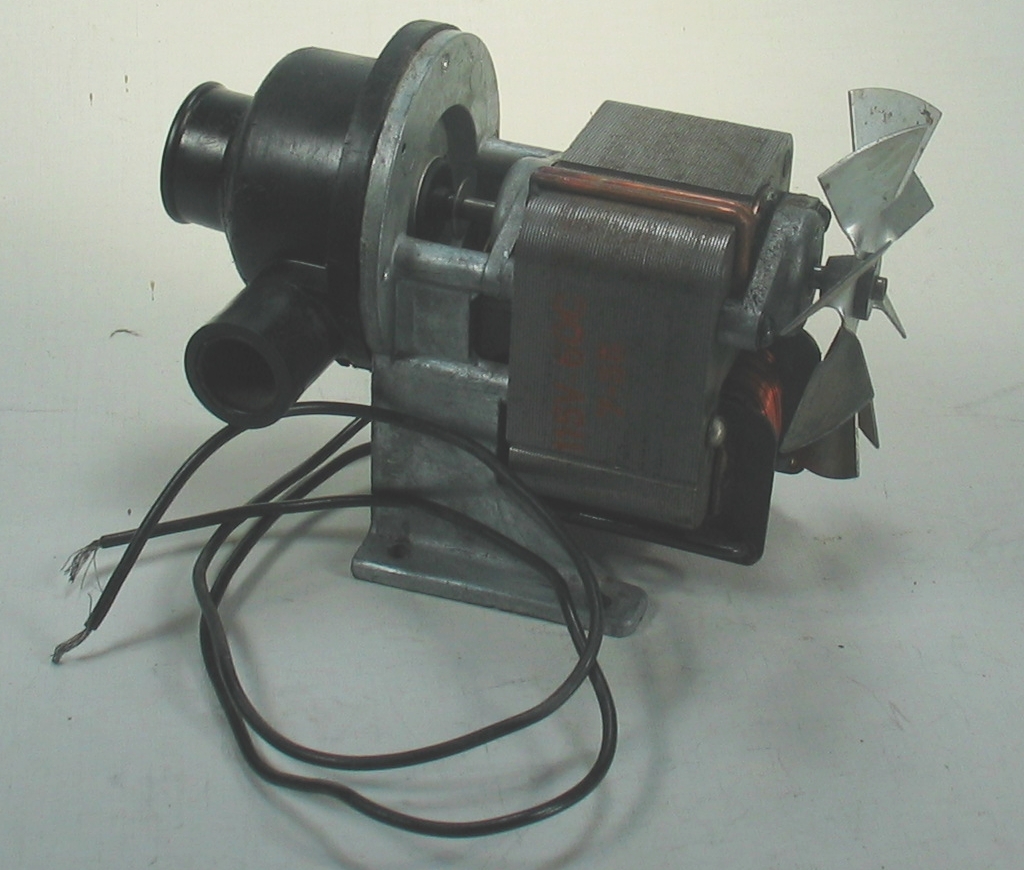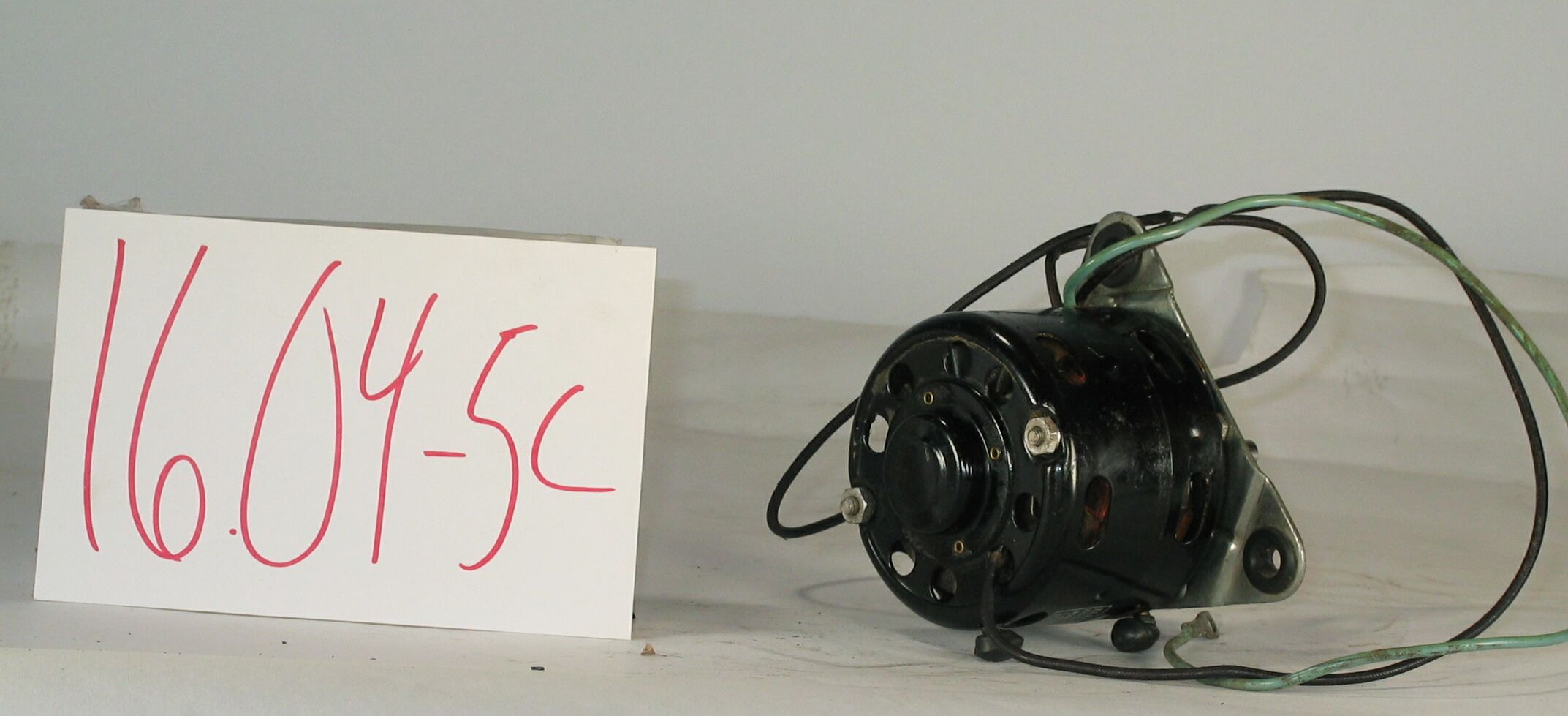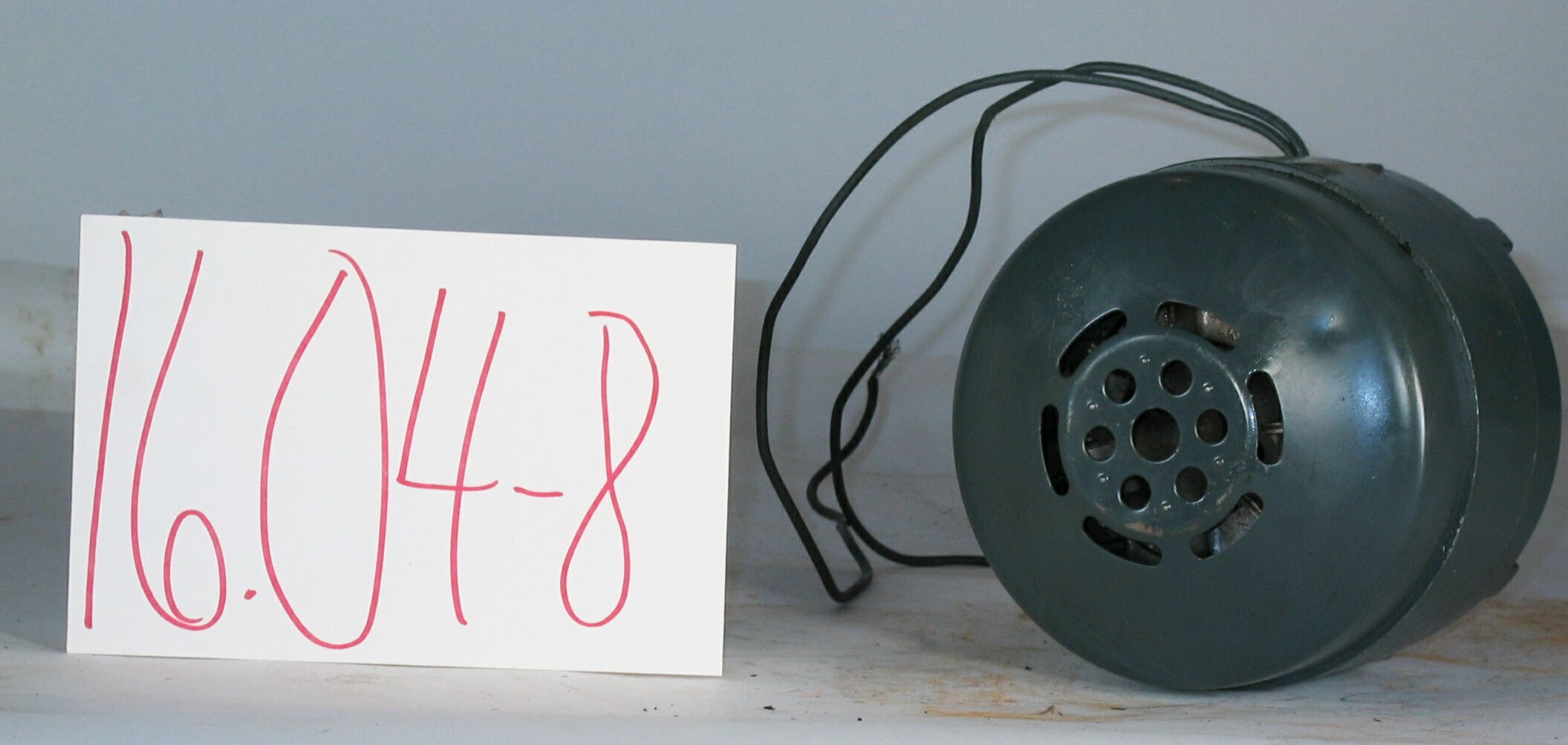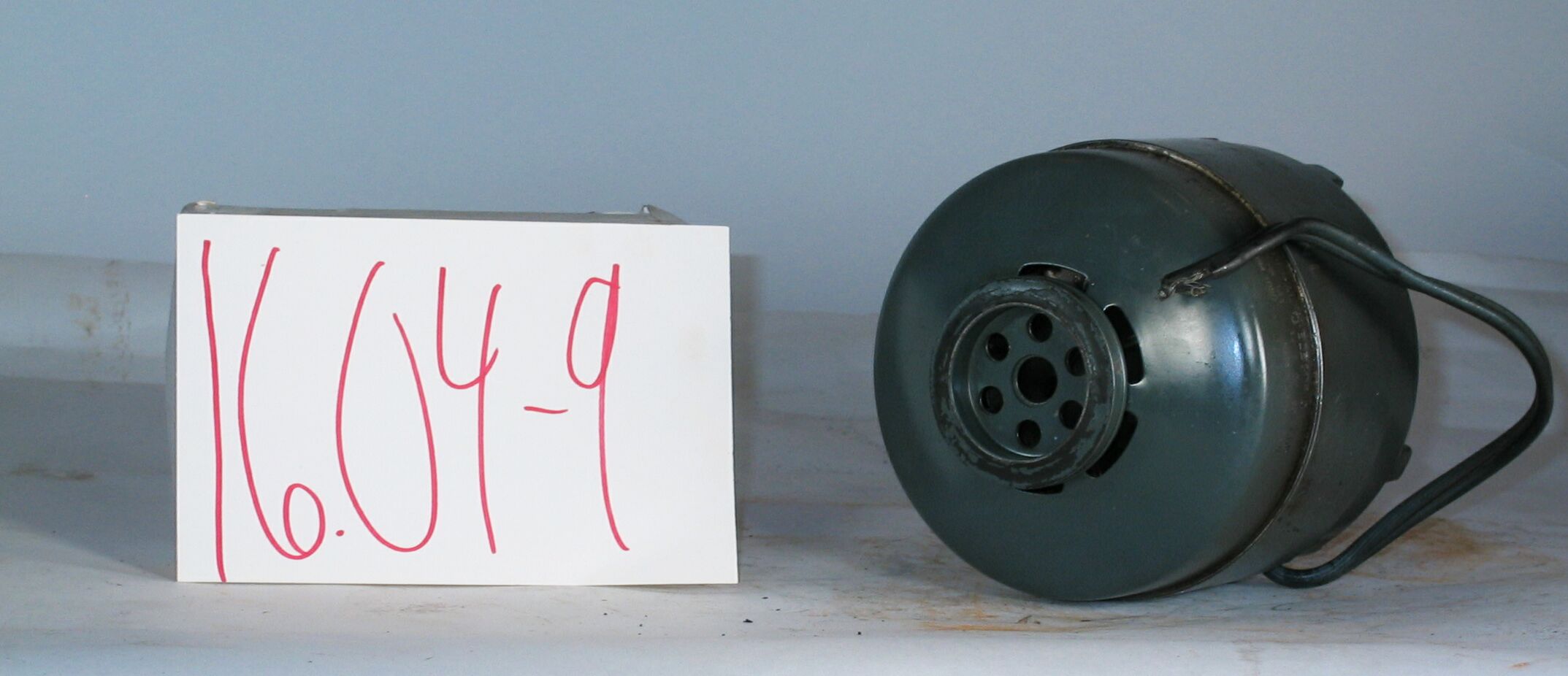16.04-4: Electrohome 1956 Shaded Pole Induction Motor
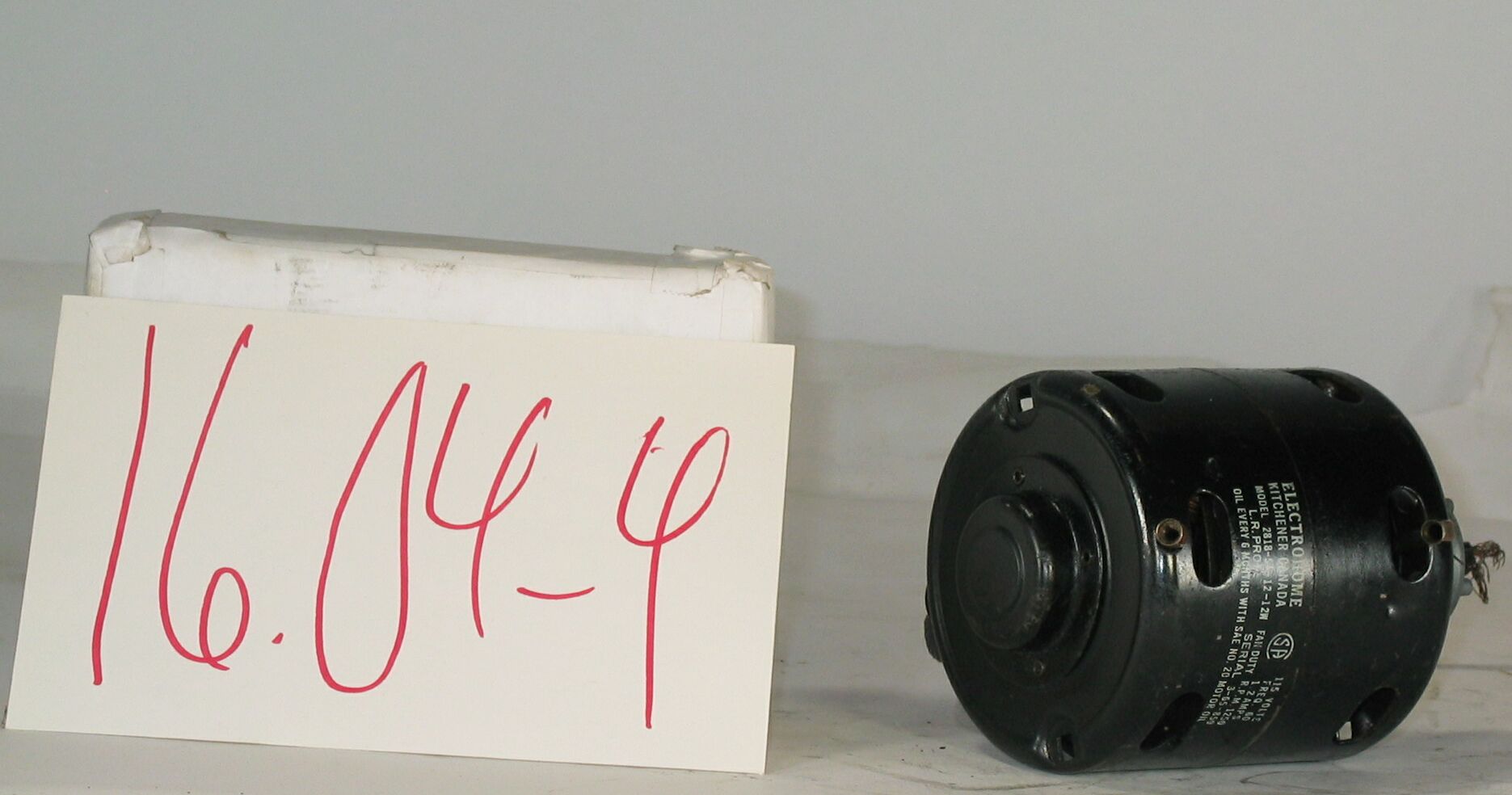
| HHCC Accession No. 2006.190 | HHCC Classification Code: 16.04-4 |
|---|
Description:
A mid 20th century, 60 cycle, Canadian made, shaded pole, induction motor, with custom fan hub, engineered for use on small commercial refrigeration fan-coil cooling unit applications, commonly found in food display cases throughout the 1950’s through 70’s, helping to change the face of Canadian food merchandising in Canada, with greater range of fresh vegetables and meat products, often held in refrigerated self-service display cases, Electrohome, Circa 1965. [see also ID#315 to 317]
Group:
16.04 Electric Motors - Single Phase, Shaded Pole and Universal
Make:
Electrohome
Manufacturer:
Electrohome, Kitchener, Ont
Model:
2828-53-12-03
Serial No.:
4-56 595
Size:
6 x 3 ‘ round
Weight:
4 lbs.
Circa:
1956
Rating:
Exhibit, education, and research quality, illustrating the engineering and construction of a mid 20th century shaded pole, 60 cycle, highly customized, induction motor specifically designed for small refrigeration, fan-coil cooling unit applications, by a uniquely Canadian electrical manufacturer.
Patent Date/Number:
Provenance:
From York County (York Region) Ontario, once a rich agricultural hinterlands, attracting early settlement in the last years of the 18th century. Located on the north slopes of the Oak Ridges Moraine, within 20 miles of Toronto, the County would also attract early ex-urban development, to be come a wealthy market place for the emerging household and consumer technologies of the early and mid 20th century.
This artifact was discovered in the 1950’s in the used stock of T. H. Oliver, Refrigeration and Electric Sales and Service, Aurora, Ontario, an early worker in the field of agricultural, industrial and consumer technology.
Type and Design:
Early mid 20th century, classic, shaded pole induction motor, engineered for fan duty on small refrigeration fan-coil evaporator applications
- 25 amp. 110 volts, 60 cycle electrical junction box accommodating metallic flexible cable Custom fan hub to meet equipment manufactures requirements Sleeve bearings, oilers
Ferro-magnetic two piece body No base plate, designed for body strap mounting
Construction:
Material:
Special Features:
Accessories:
Capacities:
Performance Characteristics:
Operation:
Control and Regulation:
Targeted Market Segment:
Consumer Acceptance:
Merchandising:
Market Price:
Technological Significance:
With custom fan hub, the motor would mark the increasing customization of shaded pole induction motor technology, matching it physically, as well as electrically and mechanically to the unique needs of equipment manufactures [See ID# 315 to 317] By the 1960’s the success of shaded pole motor technology would trigger a movement in the commercial refrigeration industry solidly towards more compact and efficient forced air cooling units, in preference to natural or gravity systems [i.e., fan coil units replaced much static fin coils]. The single phase alternating current induction motor has a public face of great simplicity - no commutator, brushes, governor nor switching mechanism to get it started, simply a field winding and solid state [squirrel cage] rotor mounted between two bearings. Its ‘shading pole(s)’ consisting of single turn of wire strategically placed around its pole face(s), is all that is required to start rotation. Yet the shaded pole induction motor is a marvel of early 20th century electrical design engineering. [See Reference No. Chapter XIII, P. 297]
Industrial Significance:
A marker of the ‘golden’, post W.W.II years of refrigeration manufacturing in Canada, which encouraged electric appliance and equipment manufacturers to enter the small motor’s ‘ see also ID#312. Its low cost and unique speed-torque characteristics make it ideal for small fan applications of 1/20th HP or less. A one-of-a-kind, just-in-time technology, it quickly found a special place in 20th century appliances and electrical equipment, where air circulation and ventilation where imperatives.
Socio-economic Significance:
Socio-cultural Significance:
The shaded pole induction motor quickly became an integral, often unobtrusive, component part of the appliances and equipment that increasingly invaded the Canadian home and place of business starting in the early 20th century. Typically custom engineered as component part of a larger piece equipment to ensure air circulation and ventilation, the shaded pole induction motor has enabled much and in so doing has change much of life for Canadians, as an essential part of our 20th and 21st century technological experience. Of equal significance is the ‘shaded pole synchronous motor’, which made possible the electric clock and a multitude of automatic time controlled devices throughout the 20th century [see for example Group 12.08 and 12.10 control devices]
Donor:
G. Leslie Oliver, The T. H. Oliver HVACR Collection
HHCC Storage Location:
Tracking:
Bibliographic References:
‘Fractional Horsepower Electric Motors’, Cyril Veinott, McGraw Hill New York, 1948, Chapter XIII, P.297 ‘Rewinding Small Motors’, Daniel Braymer and C.C. Roe, McGraw Hill, 1932 ‘A course in Electrical Engineering, Volume II, Alternating Current’, Chester Dawes, McGraw Hill, 1934, Starting single Phase Induction Motors, P. 362. ‘The Fractional Horsepower Motor and its Impact on Canadian Society and Culture’, G. Leslie Oliver, Material History Review, Vol. 43, Journal National Museum of Science and Technology, 1996.
